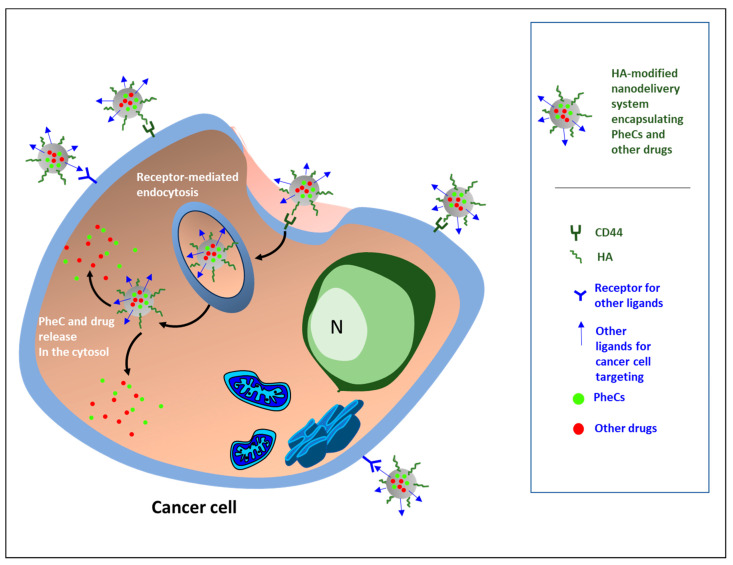Figure 2.
The nanoformulations designed for the targeted delivery of phenolic compounds (PheCs) to cancer cells are, in most cases, polymeric nanoparticles (NPs) having hyaluronic acid (HA) among the constituent polymers or NPs decorated at the surface with HA alone or accompanied by additional targeting ligands. Among the additional targeting ligands used, there are: fucoidan, that functions as a ligand for P-selectin and helps the nanosystems to be internalized in cancer cells [42,44,46]; EGF Receptor-Targeted Peptide (GE11) for binding to EGFR overexpressed in prostate cancer [49]; folic acid and biotin functioning as ligands for the respective receptors, both overexpressed in cancer cells [67]; mannose for the binding to the CD206 receptor for specifically targeting the tumor-associated macrophages (TAMs) [68]; glycyrrhetinic acid (GA) that binds to the specific receptor overexpressed in hepatocarcinoma cells and in activated hepatic stellate cells (HSCs) [73]; riboflavin [74]. Besides HA, other bioactive constituents of the nanoformulation shells are: the bisphosphonate alendronate, able to specifically target osteosarcoma cells [69]; D-alpha-tocopheryl polyethylene glycol 1000 succinate (TPGS), able to inhibit P-gp efflux pumps, thus overcoming multidrug resistance (MDR) in cancer [40].

